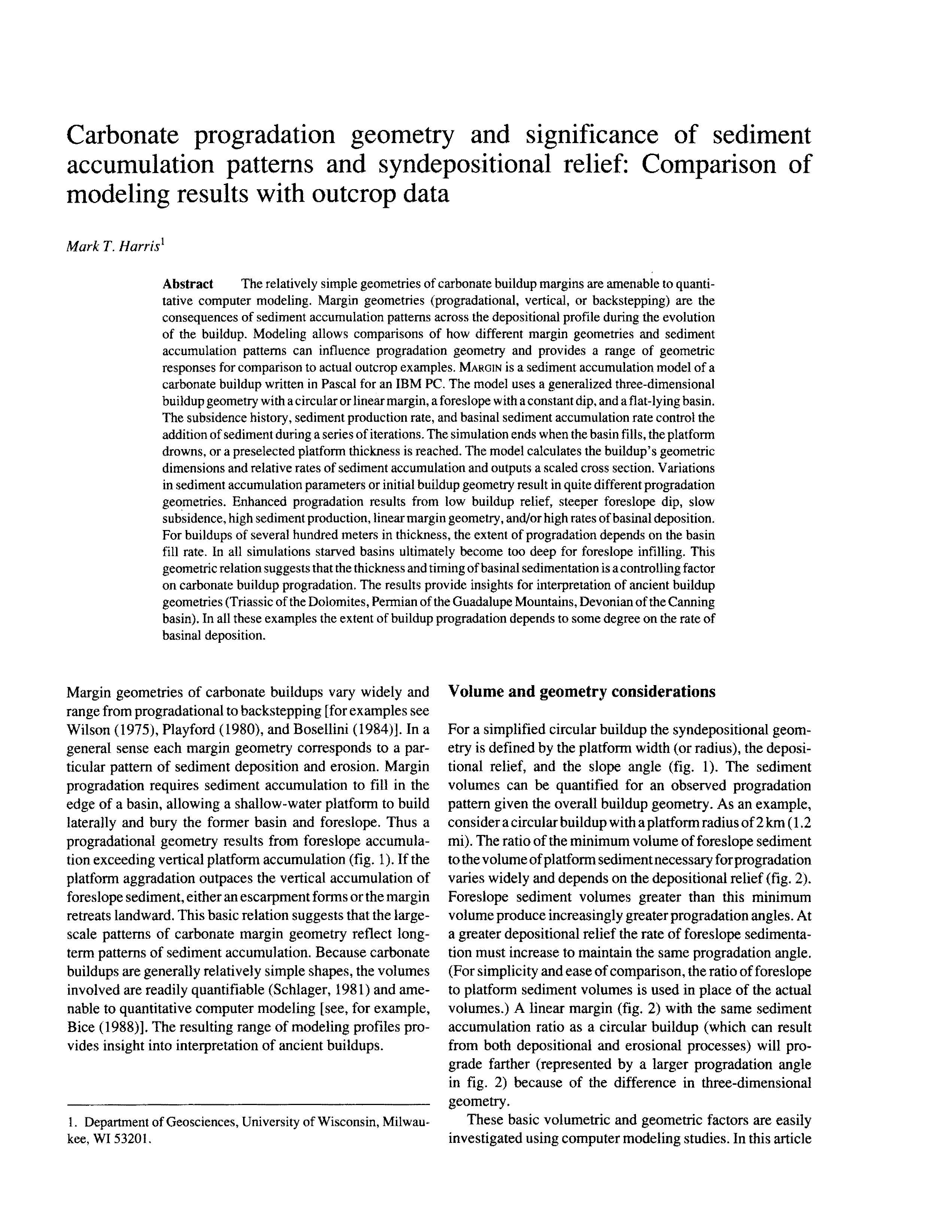Carbonate progradation geometry and significance of sediment accumulation patterns and syndepositional relief: Comparison of modeling results with outcrop data
DOI:
https://doi.org/10.17161/kgsbulletin.no.233.20476Abstract
The relatively simple geometries of carbonate buildup margins are amenable to quantitative computer modeling. Margin geometries (progradational, vertical, or backstepping) are the consequences of sediment accumulation patterns across the depositional profile during the evolution of the buildup. Modeling allows comparisons of how different margin geometries and sediment accumulation patterns can influence progradation geometry and provides a range of geometric responses for comparison to actual outcrop examples. MARGIN is a sediment accumulation model of a carbonate buildup written in Pascal for an IBM PC. The model uses a generalized three-dimensional buildup geometry with a circular or linear margin, a foreslope with a constant dip, and a flat-lying basin. The subsidence history, sediment production rate, and basinal sediment accumulation rate control the addition of sediment during a series of iterations. The simulation ends when the basin fills, the platform drowns, or a preselected platform thickness is reached. The model calculates the buildup's geometric dimensions and relative rates of sediment accumulation and outputs a scaled cross section. Variations in sediment accumulation parameters or initial buildup geometry result in quite different progradation geometries. Enhanced progradation results from low buildup relief, steeper foreslope dip, slow subsidence, high sediment production, linear margin geometry, and/or high rates of basinal deposition. For buildups of several hundred meters in thickness, the extent of progradation depends on the basin fill rate. In all simulations starved basins ultimately become too deep for foreslope infilling. This geometric relation suggests that the thickness and timing of basinal sedimentation is a controlling factor on carbonate buildup progradation. The results provide insights for interpretation of ancient buildup geometries (Triassic of the Dolomites, Permian of the Guadalupe Mountains, Devonian of the Canning basin). In all these examples the extent of buildup progradation depends to some degree on the rate of basinal deposition.
Downloads

